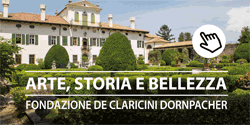Home / WHAT TO SEE /Cathedral of ''Santa Maria Assunta''
Cathedral of ''Santa Maria Assunta''
The Cathedral dedicated to Santa Maria Assunta is the main church of Cividale del Friuli (UD). The first church built in this place dates back to the 8th century, commissioned by the patriarca Callisto. In the mid-fifteenth century it was entrusted to Bartolomeo delle Cisterne, the reconstruction of the sacred building in the Gothic-Venetian style. The works lasted for a long time, the architect died in 1480, the building remained unfinished and in 1502 a column yielded causing the collapse of a large part of the factory. After a short time the reconstruction was entrusted to Pietro Lombardo who built the current cathedral in a Gothic-Venetian and Renaissance style. At the end of the eighteenth century architects Giorgio Massari and Bernardino Maccaruzzi realized an extensive internal restructuring.
On the inside wall of the façade just above the main portal is the Equestrian Monument of Marcantonio da Manzano, a Cividaleese soldier who died in 1617 during the siege of Gradisca. The sculpture, in lacquered wood, was commissioned by the Cividale in 1621. Above the doors there are four tombstones, which recall some highlights of the history of the Duomo and celebrate its benefactors. The Cathedral houses works of considerable artistic and historical value: wooden crucifix, placed in the left aisle built in the thirteenth century The altar of the Blessed Sacrament, executed in 1580 by Ercole and Orazio Liberale. The Pellegrino II altarpiece, one of the most important medieval masterpieces of Italian jewelery.
Today placed on the high altar, it consists of one hundred twenty-three plates of embossed golden silver. The central part is occupied by a Madonna with Child, among the archangels Michele and Gabriele. On the sides there are two compartments of three overlapping bands, with twenty-five figures of saints. It is framed by a sequence of twenty-three biblical characters and the entire figure of the patriarca Pellegrino II.
The style of the work recalls Byzantine forms softened by a Romanesque plasticism. In this church every year, on January 6, the characteristic Messa dello Spadone takes place, a unique ritual that dates back to 1366 funeral monument of the PatriarcaNicolò. The funeral monument was created from 1515 by Giovanni Antonio di Bernardino da Carona.






